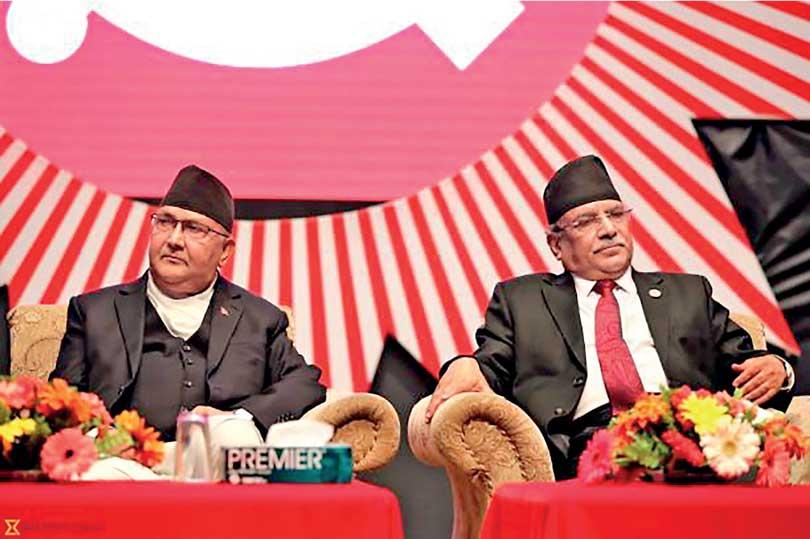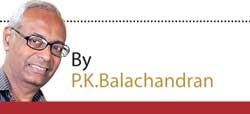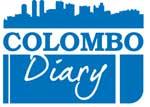Reply To:
Name - Reply Comment

Oli and Prachanda
 The fate of the “strong” communist Government in Nepal is hanging in the balance due to serious internal differences and a steep decline in Prime Minister K.P.Sharma Oli’s popularity.
The fate of the “strong” communist Government in Nepal is hanging in the balance due to serious internal differences and a steep decline in Prime Minister K.P.Sharma Oli’s popularity.
On Sunday, Oli and his rival, Pushpa Kamal Dahal Prachanda, who is Co-Chairman of the ruling Nepal Communist Party (NCP), met to find common ground, but failed. Prachanda had maintained that Oli must resign both as party Co-chair and Prime Minister, but the latter had refused.
The crisis in the party had deepened after Oli publicly alleged that Prachanda was part of a plot hatched in New Delhi to oust him. New Delhi had been irritated by his nationalistic or pro-China stance on certain key geo-strategic issues. But denying any role for India in the on-going political crisis in Nepal, Prachanda declared: “It is not India which wants you to go, I want you to go!”
Be that as it may, it is noteworthy that as many as 30 out of 44 NCP Standing Committee members had also demanded that Oli resign both as party Co-Chair and Prime Minister.
 Last Thursday, Oli prorogued the House of Representatives (parliament) raising concerns that he was planning to split the NCP through an Ordinance which would have made splitting parties easier than before. He is said to be planning to revive his Communist Party of Nepal (United Marxist Leninist) and link up with the Nepali Congress (NC) to form a government with him as PM. Recently, Oli had a 90-minute meeting with the NP chief Sher Bahadur Deuba. It did not matter to either of them that Deuba is dubbed pro-India and Oli, pro-China. Being in power was the main consideration not ideological compatibility.
Last Thursday, Oli prorogued the House of Representatives (parliament) raising concerns that he was planning to split the NCP through an Ordinance which would have made splitting parties easier than before. He is said to be planning to revive his Communist Party of Nepal (United Marxist Leninist) and link up with the Nepali Congress (NC) to form a government with him as PM. Recently, Oli had a 90-minute meeting with the NP chief Sher Bahadur Deuba. It did not matter to either of them that Deuba is dubbed pro-India and Oli, pro-China. Being in power was the main consideration not ideological compatibility.
The NCP Government was formed after the stunning victory of the Oli-Prachanda alliance in the October 2017 parliamentary elections. But in less than three years, the government, enjoying nearly two thirds majority, had reached the end of its tether.
The ruling NCP was formed post-election, in May 2018. Oli’s Communist Party of Nepal (United Marxist Leninist) and Prachanda’s Communist Party of Nepal (Maoist Center) amalgamated to give Nepal a solid Left of Center and nationalistic platform. By an agreement, Oli became Prime Minister and also Co-Chairman of the NCP while Prachanda became the other Co-Chairman. Along with this, there was also an agreement that Oli would be PM for half the five-year term and Prachanda will take over in the second half.
But it did not take very long for the relationship between Oli and Prachanda to deteriorate rapidly and for the majority in the NCP’s Standing Committee to turn against Oli. Prachanda accused Oli of acting dictatorially and arbitrarily and sidelining him totally. The Standing Committee of the NCP also complained that Oli was only consulting a small coterie and acting arbitrarily, in cahoots with President Bidhya Devi Bhandari who was an activist of Oli’s CPN (UML).
To get people on his side, Oli raised the nationalistic issue of India’s control over three strategic areas, Kalapani, Limpiyadhura and Lipulekh on the West Nepal-India border, areas which Nepal had been claiming. Oli got widespread support on this and parliament unanimously passed a constitutional amendment to formally include these disputed areas and design a new official Nepal map. But the move failed to convince his detractors that he should continue in office. To his rivals he had comprehensively failed as both PM and NCP Co-Chair.
Partisan and peoples’ issues
Among the complaints was that Oli was not sticking to his word. He backed out of the agreement to serve as Prime Minister for half the term and yield that place to Prachanda in the next half. Then after talks, he was allowed to continue for the full five year term, but was asked to give full executive powers to Prachanda to run the NCP as Co-Chairman. But, in reality, Prachanda and the NCP Standing Committee continued to be sidelined.
Concentration of power in hands, led to Oli being blamed for everything that went wrong in Nepal. There were irregularities in the procurement of medical supplies from China to contain COVID-19. Shraddha Pokharel, writing in The Diplomat, says there were charges of corruption in the procurement of unreliable and controversial Rapid Diagnostic Kits (RDK) from China. It is alleged that a private company close to the ruling party was favoured. It is pointed out that when Nepal imposed its lockdown toward the end of March, it had only two confirmed cases of COVID-19. But by July 6, there were 15, 784 confirmed cases and 34 deaths. People are demanding PCR (or swab) tests instead of the unreliable Rapid-Diagnostic Tests (RDTs).
“Quarantine centres are dangerously crowded; lack basic facilities such as clean water, nutritious food, and toilets; and offer poor medical care. The country has also been unable to institute a reliable testing regime: in several of its COVID-19-related deaths, the infection was confirmed only upon death,” Shraddha Pokharel writes.
According to Shraddha, people have also been very critical of the state’s “opacity” about how taxpayers’ money has been spent in fighting COVID-19 – a concern that was particularly visible in light of the Oli government’s announcement that the equivalent of US$ 82 million had been spent so far on COVID-19 management.
Role of social media
Apart from street protests, activists are using Social Media to make up for the weakness of the opposition Nepali Congress. Those organising the protests have taken great pains to articulate the “apolitical” nature of their activism to get the widest measure of support. Explaining this phenomenon, Shraddha writes: “This anxiety about links to political outfits comes from a long history of party-affiliated student union protests, which have negative connotations of anarchy, partisanship, and controversy. The organizers of the protests have also been particularly guarded due to the various conspiracy theories alleging the role of foreign powers in fomenting the unrest; they fear being tagged as anti-national. In fact, on June 13 when parliament updated the country’s political map by including borderlands disputed with India within its territory, the protesters mixed their criticism of the government with celebration of the constitutional amendment.”
China’s bid to bring about rapprochement
Even as a split in the ruling NCP appears likely and even imminent, efforts are being made by the second rank leaders and the youth in the NCP to bring about a rapprochement. This is one reason for Oli and Prachanda to meet so many times.
China too is playing a role in the bid to bring about communist unity. This is because it’s strategic and economic success in Nepal hinges on communist solidarity and the communists being in power. China’s influence on Nepal has been growing since 2010. Firstly, Nepal is part of Xi Jinping’s prestigious Belt and Road Initiative (BRI). On its part, Nepal has identified 35 projects to be undertaken under BRI, which cover infrastructure development, energy, construction of integrated check posts, free trade area, and irrigation. Estimates are that these projects would cost the US $10 billion.
Secondly, the NCP and the Chinese Communist Party have fraternal ties. In early June the NCP and the CPC had a webinar on organizational matters. Interestingly, Prachanda was the chief guest at the Webinar and Oli did not attend it. Thirdly, the Chinese envoy in Kathmandu had, through the Nepalese Foreign Minister, Pradeep Gyawali, advised Oli and Prachanda to patch up in the larger interest of communism in Nepal.
It remains to be seen if Big Brother China will be able to prevail upon the two to make up. China will also have to take into account the fact that Oli’s popularity has declined visibly.